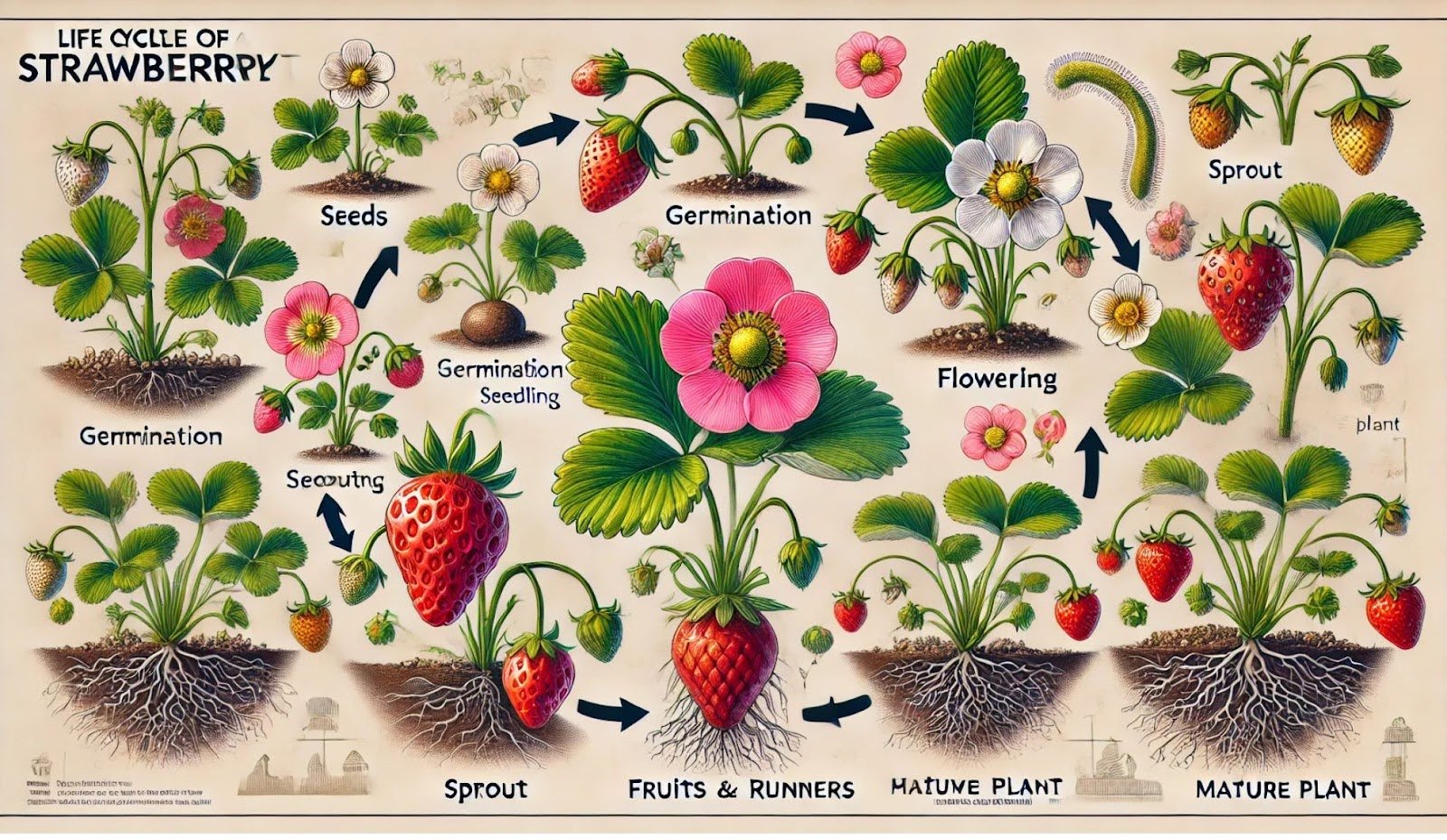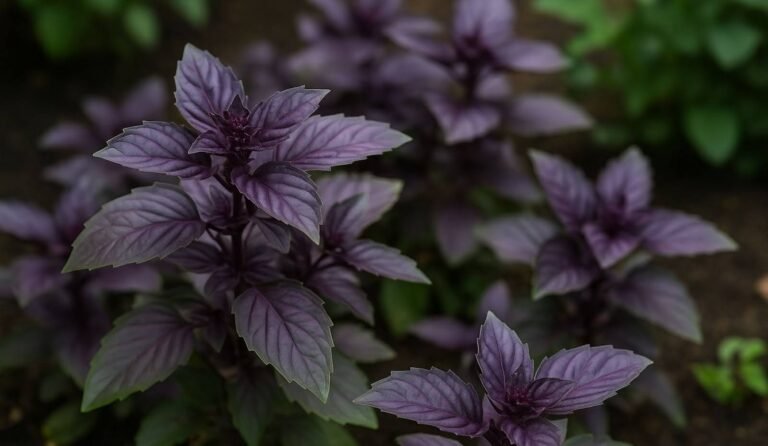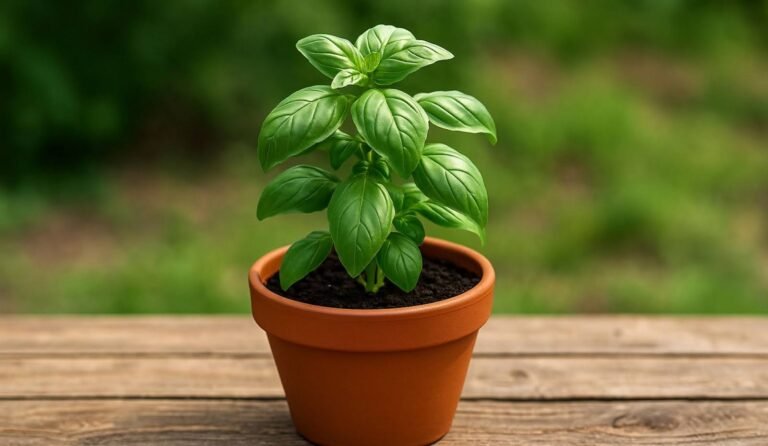Strawberry Plant Growth Stages: Tips for Better Yields
Strawberry plant growth stages are fascinating to watch, especially if you’re ready to grow sweet, juicy berries right at home. From tiny seeds to vibrant fruits, these stages reveal how strawberries thrive with the right care.
Curious about when those first flowers bloom or how to boost fruit production? Whether you’re planting indoors or outdoors, understanding these steps can be the difference between a small yield and a bumper harvest. Ready to master the art of growing strawberries? Let’s dive in and get those berries blooming!
How Fast Do Strawberries Grow?
Strawberries are quick-maturing plants that can produce fruits within three months of planting. Depending on the variety, strawberries take 60 to 90 days to mature from bare root crowns or plugs. However, June-bearing and everbearing plants don’t produce prolific yields until the following year. Day-neutral varieties produce fruit in the first year and are the most desirable for gardeners who want a quick strawberry harvest.
Why Learn About Strawberry Plant Growth Stages?
Strawberry plants, while relatively easy to grow, require proper care and attention during their growth stages to thrive. By familiarizing yourself with each stage, you’ll be better equipped to ensure the plants have the right conditions at every phase, recognize and address potential problems like pests or poor growth, maximize fruit production and harvest quality. Whether you’re an experienced gardener or just starting out, this guide is designed to give you the knowledge you need to succeed.
Overview Strawberry Plant Growth Stages
Strawberry plants progress through six main stages:
- Germination (when seeds or runners start to grow).
- Seedling Stage (a baby strawberry plant begins to form).
- Vegetative Growth (roots and leaves develop).
- Flowering (strawberry plant flowers appear).
- Fruiting (strawberries grow and ripen).
- Dormancy (a resting phase before the next growing season).
Each stage has specific requirements for light, water, nutrients, and care. Let’s explore each phase in detail.
1. Germination Stage: Starting Your Strawberry Plants
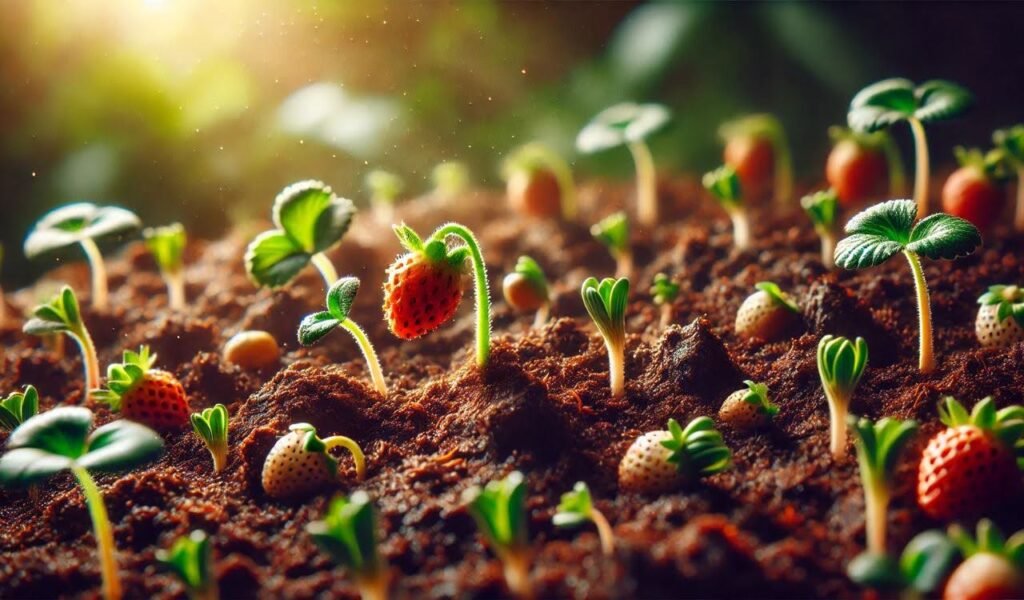
The journey of a strawberry plant begins with germination. You can grow strawberries from seeds or propagate them using runners (stolons).
Starting from Seeds
Timeline: Germination typically takes 1–2 weeks.
Conditions: Strawberry seeds require consistent moisture, warmth (65–75°F), and light for successful germination.
Tips:
Use seed trays or small pots filled with a high-quality seed-starting mix. Lightly press the seeds into the soil surface without burying them too deeply. Cover the tray with plastic wrap or a humidity dome to retain moisture.
Using Runners
Runners are long stems that grow horizontally from mature strawberry plants, producing baby plants at their tips. These are an excellent way to propagate new plants with a genetic copy of the parent.
- Detach the baby plants once they have developed a small root system.
- Plant them in pots or directly into the garden bed.
2. Seedling Stage: Nurturing Baby Strawberry Plants
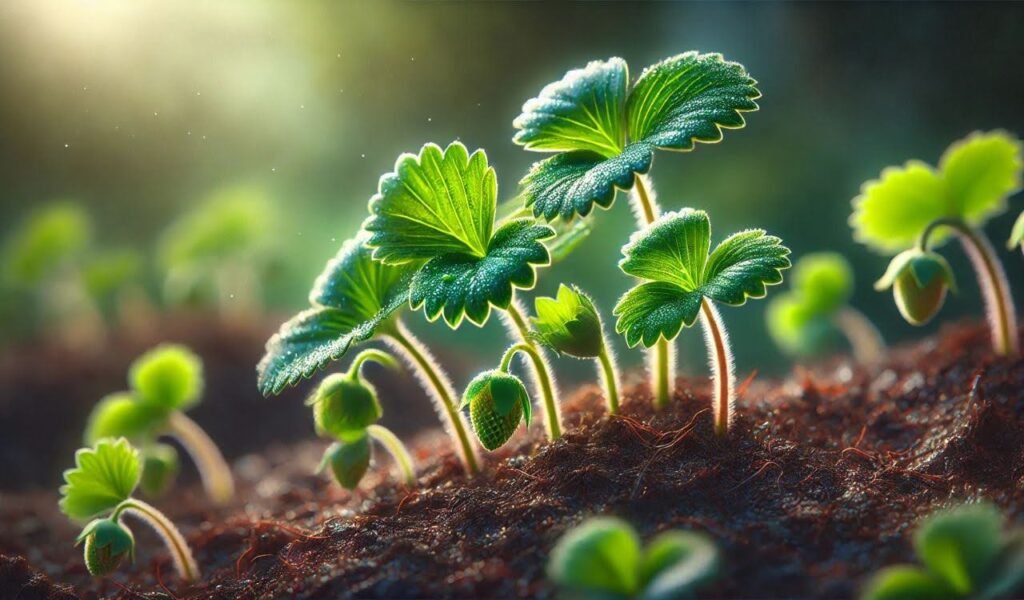
Like all fruiting plants, strawberries begin as seeds. But most gardeners don’t grow strawberries from seed (though it is perfectly feasible). Instead, it is more common to source bare root crowns or strawberry plugs. Both types of baby plants get established in similar time frames.
You can plant two to three weeks before your last spring frost date and expect the first berries in about three months. Peak production is usually mid-summer through fall. Day-neutral varieties like ‘Albion’ or ‘Seascape’ are the best options for beginners who want to enjoy berries in the first year. You can find bare roots or plugs of both types.
After germination, the baby strawberry plants enter the seedling stage. This is when small leaves start to appear, and the root system begins to grow.
Appearance and Characteristics
Tiny green leaves form, and the plant stands a few inches tall. Roots are delicate and need careful handling.
Care Tips
Sunlight: Place the seedlings in a location with bright, indirect sunlight or under grow lights for 12–14 hours daily.
Watering: Keep the soil moist but not soggy to prevent root rot.
Transplanting: Once the seedlings have 3–4 leaves, transplant them into larger containers or garden beds, spacing them about 12–18 inches apart.
Soil: Use well-draining soil enriched with organic compost for optimal growth.
3. Vegetative Growth Stage: Building a Strong Foundation
The vegetative growth stage is all about shoots and leaves. As the plant pushes its roots deeper in the soil, it is simultaneously growing lush foliage aboveground. Leaves are essential for photosynthesis, allowing the plant to produce plenty of food to fuel its early growth. During this stage, the strawberry plants focus on growing leaves, stems, and roots. This is a crucial period for building a healthy foundation.
What to Expect
Vigorous leaf growth. Development of a robust root system. Plants spreading out horizontally.
Nutrient Requirements
Strawberries need nitrogen-rich fertilizers during this stage to promote leaf growth. Organic options like compost or fish emulsion are excellent choices.
Common Challenges
Pests: Watch out for aphids, spider mites, and slugs.
Diseases: Fungal diseases like powdery mildew can occur if there’s too much moisture.
Care Tips
Ensure the plants receive 6–8 hours of sunlight daily. Water deeply but infrequently to encourage deep root growth. Mulch around the plants to retain moisture and reduce weed competition.
4. Flowering Stage: The First Signs of Fruit Production
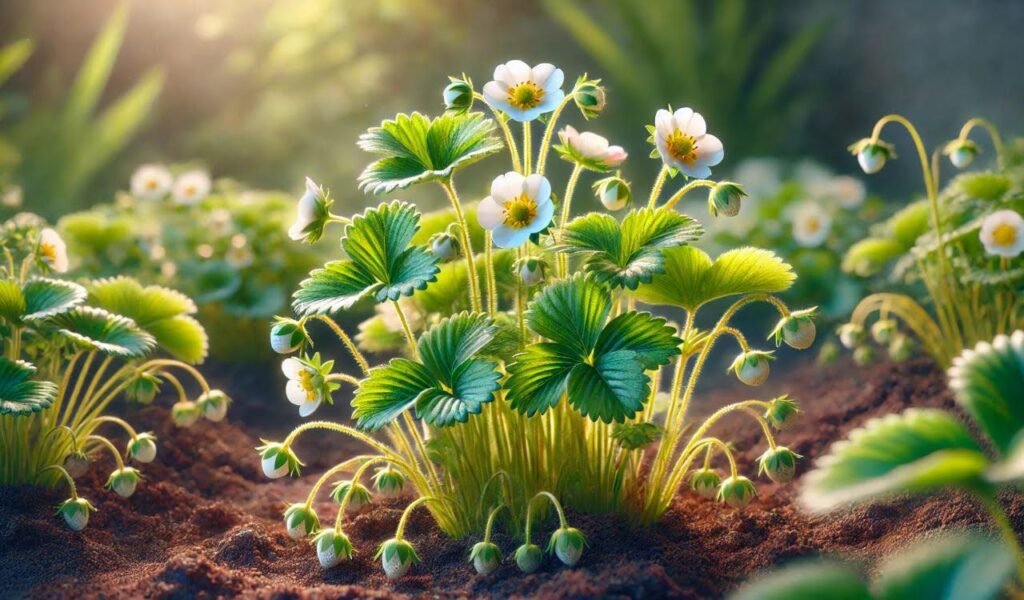
After about one and a half to two months of rooting and vegetative growth, if your plants appear lush and thriving, stop removing the early blossoms and let them shift into their reproductive phase. The little white flowers will cover your strawberry patch, and bees will begin flocking to the area.
Interplanting with white alyssum is a great way to attract the maximum amount of pollinators and other beneficial insects to ensure a strong fruit set. The appearance of strawberry plant flowers marks the beginning of the reproductive stage. This is when the plant prepares to produce fruit.
Key Characteristics
Small white or pink flowers bloom, signaling the start of fruit development. Flowers will later give way to tiny green fruits.
Pollination
Outdoors, bees and other pollinators help with pollination. Indoors, you may need to hand-pollinate using a small paintbrush to transfer pollen from flower to flower.
Care Tips During Flowering
Nutrients: Switch to a fertilizer with balanced nitrogen, phosphorus, and potassium (e.g., 10-10-10).
Support: Provide stakes or cages to keep the plants upright.
Pest Control: Protect flowers from pests like thrips or beetles.
5. Fruiting Stage: Growing and Harvesting Strawberries
Once pollination is successful, the flowers begin to transform into strawberries.
What Happens During Fruiting
Fruits start as small green berries that grow larger and turn red as they ripen. The process takes about 4–6 weeks after flowering.
Care for Maximum Yield
Water consistently to prevent the fruits from drying out. Provide potassium-rich fertilizer to enhance fruit quality and sweetness. Protect ripening strawberries with netting to deter birds and other animals.
Harvesting
Harvest strawberries when they are fully red and slightly firm to the touch. Avoid pulling; use scissors to snip the stem to prevent damage to the plant.
6. Dormancy Stage: Preparing for the Next Growing Season
After fruiting, strawberry plants enter a dormancy phase, particularly in colder climates.
What Happens During Dormancy
Growth slows or stops entirely. The plant conserves energy for the next growing season.
Care Tips for Dormant Plants
In cold climates, mulch heavily around the plants to protect them from freezing temperatures. Trim back old leaves and runners to reduce disease risk. Keep the soil slightly moist but avoid overwatering. For indoor growers, maintain a temperature of 50–60°F to simulate dormancy.
Additional Tips for Growing Strawberries
Choosing the Right Variety
June-bearing: Produce a large crop once a year.
Ever-bearing: Yield multiple smaller harvests throughout the season.
Day-neutral: Produce fruit continuously, regardless of day length.
Growing Indoors vs. Outdoors
Indoors: Use grow lights, ensure proper ventilation, and avoid overcrowding.
Outdoors: Prepare well-draining soil, protect from pests, and use mulch to regulate soil temperature.
Companion Plants for Strawberries
Good companions include lettuce, spinach, and marigolds, which can repel pests and improve growth. Avoid planting strawberries near cabbage or broccoli, as they compete for nutrients.
FAQ
Why Isn’t My Strawberry Plant Flowering?
Possible reasons include inadequate sunlight, excessive nitrogen, or poor pollination.
Can I Grow Strawberries Indoors Year-Round?
Yes, with proper lighting and temperature control, strawberries can thrive indoors year-round.
How Much Sunlight Do Strawberry Plants Need?
At least 6–8 hours of direct sunlight daily. Indoors, use full-spectrum grow lights if necessary.
What Are the Best Conditions for Strawberry Plants?
Well-draining, slightly acidic soil (pH 5.5–6.5). Regular watering and consistent feeding during active growth.
How long does it take for strawberry plants to grow fruit?
It takes 4–6 weeks after flowering or 4–6 months from seeds to fruit.
Can I grow strawberries year-round?
Yes, with grow lights and consistent temperatures, especially indoors.
Why are my strawberries small and sour?
This is caused by low sunlight, uneven watering, or poor pollination.
Do strawberries need to be replanted every year?
No, they’re perennial but replacing every 3 years boosts yields.
Conclusion
Growing strawberries is a rewarding experience, whether you’re planting in your backyard or indoors. By understanding and catering to the unique needs of each growth stage—from germination to dormancy—you’ll set your plants up for success. With patience and care, you’ll soon enjoy the sweet taste of homegrown strawberries. Now it’s time to get your hands dirty and start planting. Happy gardening!

